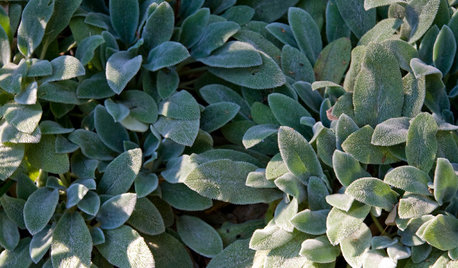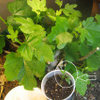Re pot, lost leaves, and fertilizing
jrl1265
9 years ago
Related Stories

GARDENING GUIDESGet on a Composting Kick (Hello, Free Fertilizer!)
Quit shelling out for pricey substitutes that aren’t even as good. Here’s how to give your soil the best while lightening your trash load
Full Story
FALL GARDENING5 Ways to Put Fall Leaves to Work in Your Garden
Improve your soil and yard the organic way with a valuable garden booster that grows on trees
Full Story
GARDENING GUIDESHow to Keep Your Citrus Trees Well Fed and Healthy
Ripe for some citrus fertilizer know-how? This mini guide will help your lemon, orange and grapefruit trees flourish
Full Story
GARDENING GUIDESCommon Myths That May Be Hurting Your Garden
Discover the truth about fertilizer, soil, staking and more to keep your plants healthy and happy
Full Story
DECORATING GUIDESConjure a Jungle in a Pot
Sprawling, climbing and with primitive-looking leaves, philodendrons bring untamed beauty to even the most civilized homes
Full Story
HOUSEPLANTSOne Pot, One Big Shot of the Tropics
Give your rooms exotic flair in a single stroke. Tall Kentia palm fits the tropical bill beautifully
Full Story
GARDENING GUIDESPacific Northwest Gardener: What to Do in September
Put in cool-weather veggies, fertilize your lawn and tidy the garden this month before chilly weather arrives
Full Story
SPRING GARDENINGHow to Grow a Rose Garden in Pots
Everything can come up roses, even without a plot of soil in sight. This step-by-step guide to growing roses in containers shows you how
Full Story
LIFE10 Reasons to Be Happy You’re a Renter
Homeownership has many benefits, but there are upsides to not owning a home too
Full Story
FOLIAGEThe Right Touch: 13 Soft, Fuzzy Plants for Gardens and Pots
Brush a hand on velvety foliage or fluffy plumes for a sensory garden experience beyond sight and smell
Full Story







greenman28 NorCal 7b/8a
meyermike_1micha
Related Professionals
Glassmanor Landscape Architects & Landscape Designers · Roosevelt Landscape Architects & Landscape Designers · Winder Landscape Architects & Landscape Designers · Billerica Landscape Contractors · Hartford Landscape Contractors · Berwyn Landscape Contractors · Bethel Park Landscape Contractors · Golden Landscape Contractors · Hickory Hills Landscape Contractors · Melrose Park Landscape Contractors · Methuen Landscape Contractors · Oxnard Landscape Contractors · Severna Park Landscape Contractors · Snoqualmie Landscape Contractors · Uxbridge Landscape Contractorsjrl1265Original Author
meyermike_1micha